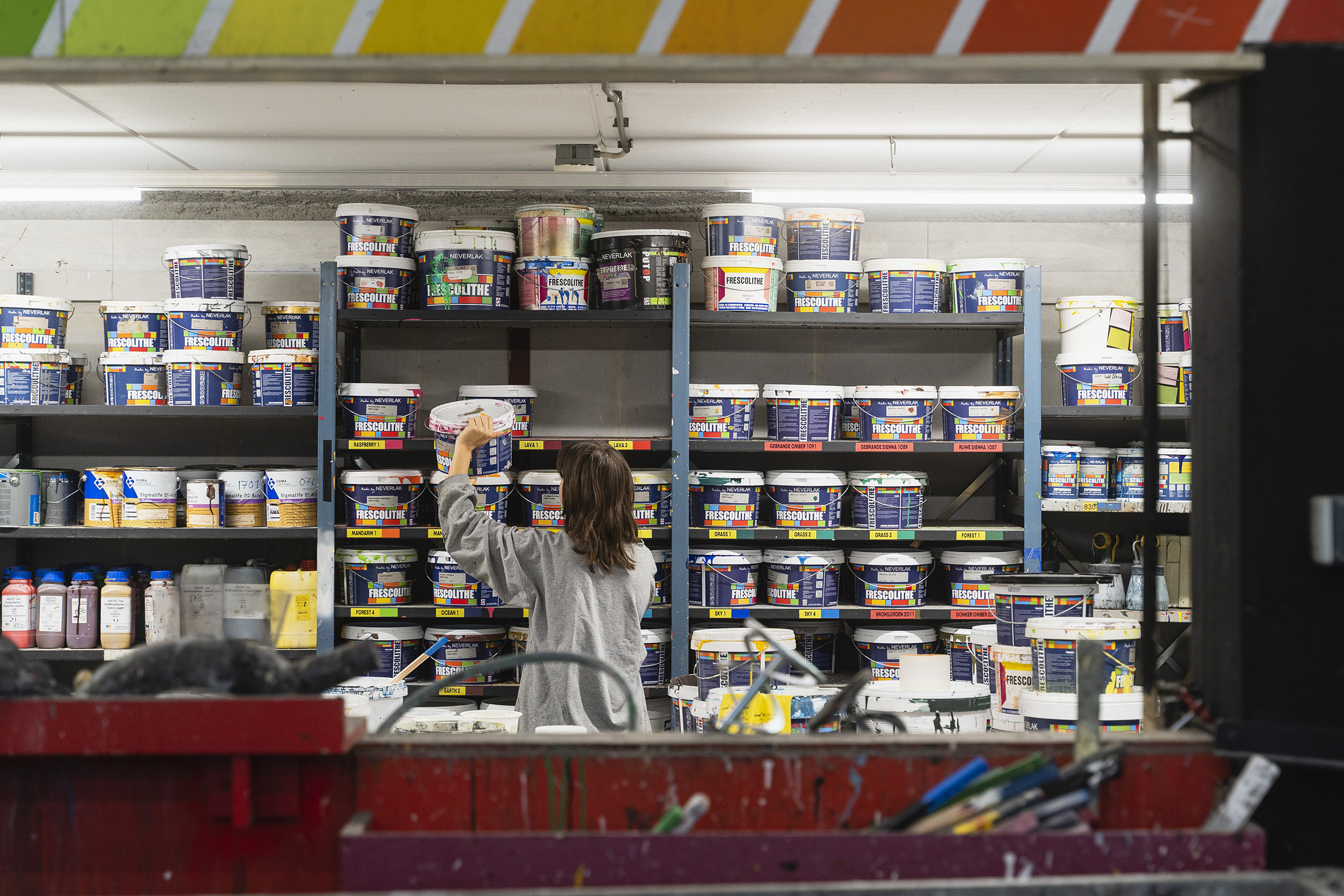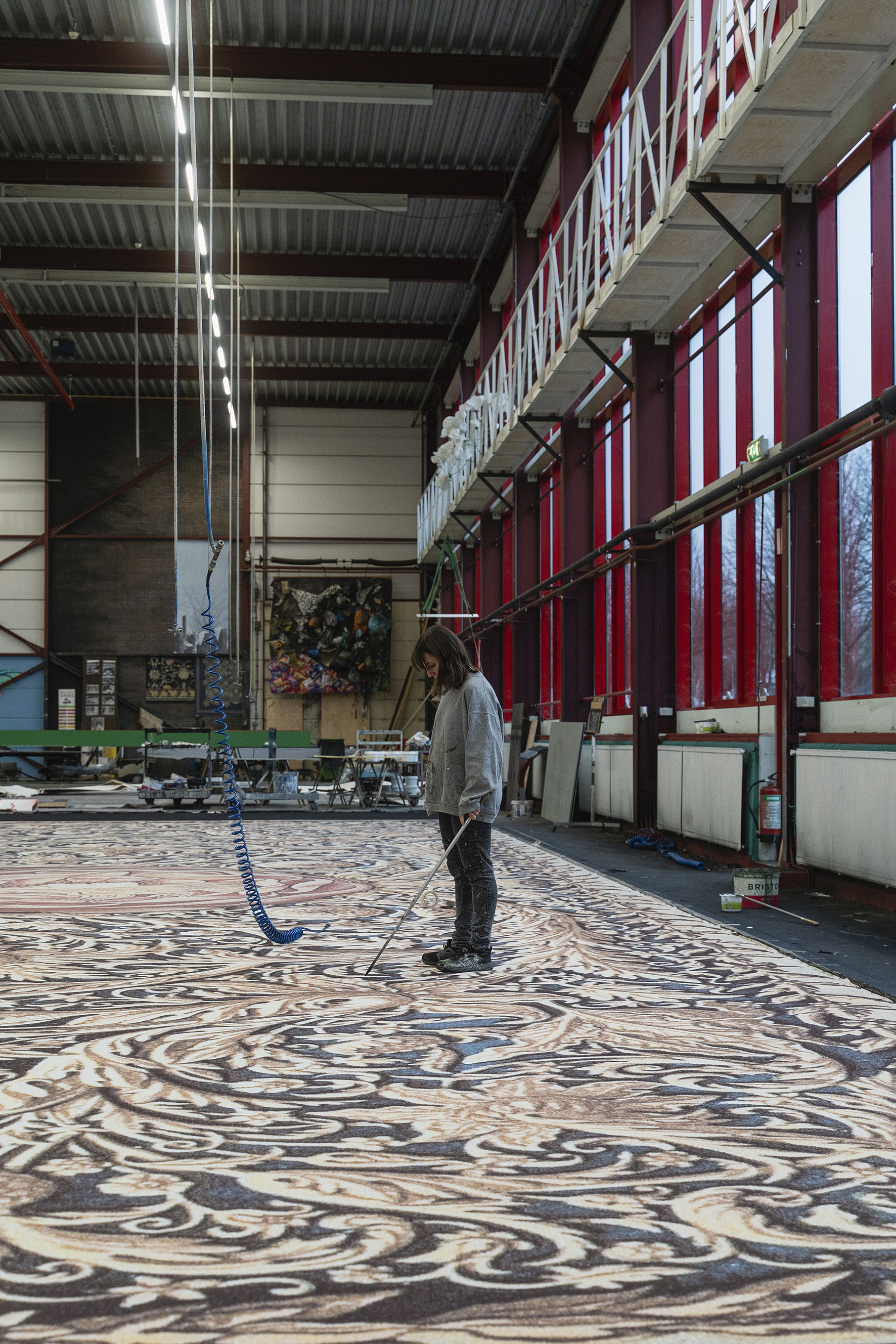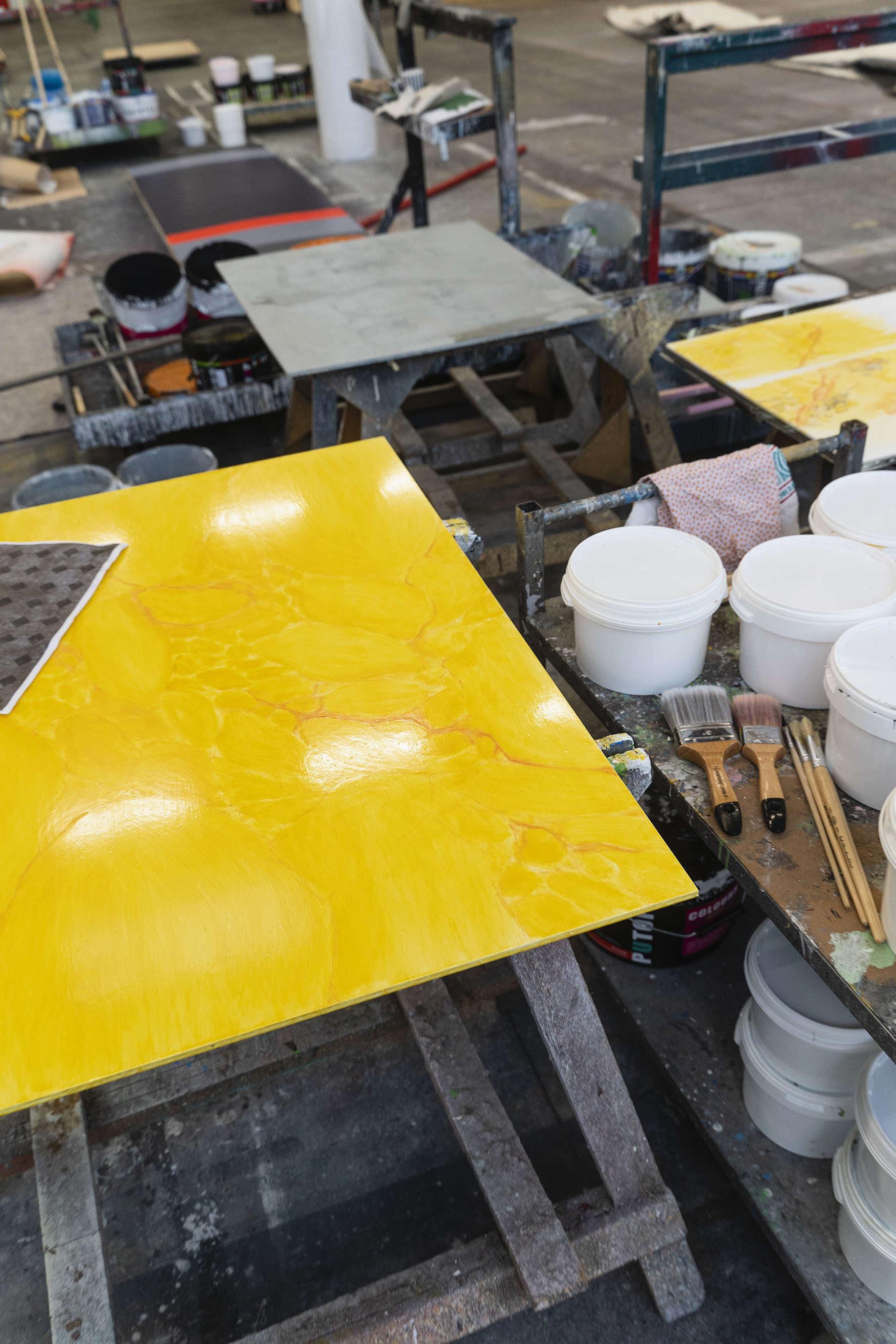
The craft of theatre: Set painters
Ballet and opera productions are often magical, but they are not just pulled out of a hat. Behind the scenes, each person in each department is working hard and doing their bit to make the magic happen, whether that is lighting, costumes or sets. But who does what? And what does this process involve? Today, we are speaking to Vanessa who works in our scene shop’s paint department.
Text: Lune Visser
We all had a dream job we fantasised about as kids: some of us wanted to be a fireman, others wanted to be a ballerina. But ten-year old Vanessa Kluge, who is German, wanted nothing more than to become a set painter. She explains: “My uncle worked as a stage crew member in the theatre. One day, he asked me if I’d be interested in going to an open day at the theatre to get a behind-the-scenes look. So, I went and fell in love instantly. By the age of 14, I had already completed my first internship at that very theatre.” That was the first of many internships: “It’s important to intern because ultimately you need to build a portfolio that proves you have a thorough understanding of the profession. At one point, during my internship in Stuttgart, I was getting up at four in the morning and coming home at eight at night. That’s how committed I was.”

Very different
Painting sets is a completely different ball game. “You paint with very long brushes – often while standing on the ground. And some of these pieces are absolutely massive – so, you have to be able to predict what the set will look like on stage.” This can be quite tricky at times. “We sometimes work with miniature sample images that look lovely on a small scale, but don't get any prettier when you enlarge them. And set painting always means a ton of painting! You have to paint the background, the floor, the set pieces – and all of it is super-sized to boot. The only time we refuse a project is if we know it won’t fit in the space we have.”
The process
We always start with a ‘small’ trial piece, before painting the set. This is usually about two to three metres in size. Once the designer has approved this sample, we will draw a grid over the test piece and then draw a grid of equal ratio on the actual set. “This makes it possible for us to work on the set square by square. We start off with a preliminary drawing and then gradually add in the details. In this way, we work on the background first, building our way up to the foreground. We try to avoid working on our knees as much as possible, but sometimes you have no choice – such as when the pieces are too big and you are unable to reach everything from a standing position.”


Enjoyment through variety
Set painting can be quite demanding due to the sheer scale of the work and the heavy labour it involves. “After all, being a set painter means sanding, spackling and priming – and not just once, but several times in a row. You are also working with huge surfaces that all have to be painted one single colour.” Fortunately, it is this variety that makes Vanessa love her job so much. “You get to do something different each time. Set painting keeps me challenged as you are continuously striving to achieve the best result possible. This means thinking ahead and coming up with a strategy to tackle each project, including the materials you will need. A lot of people visit a performance for the music or because they want to be swept away by the experience. I go because I want to see the set and admire it!”



